Understanding the Causes of Hair Loss
Hair Loss Care At Home
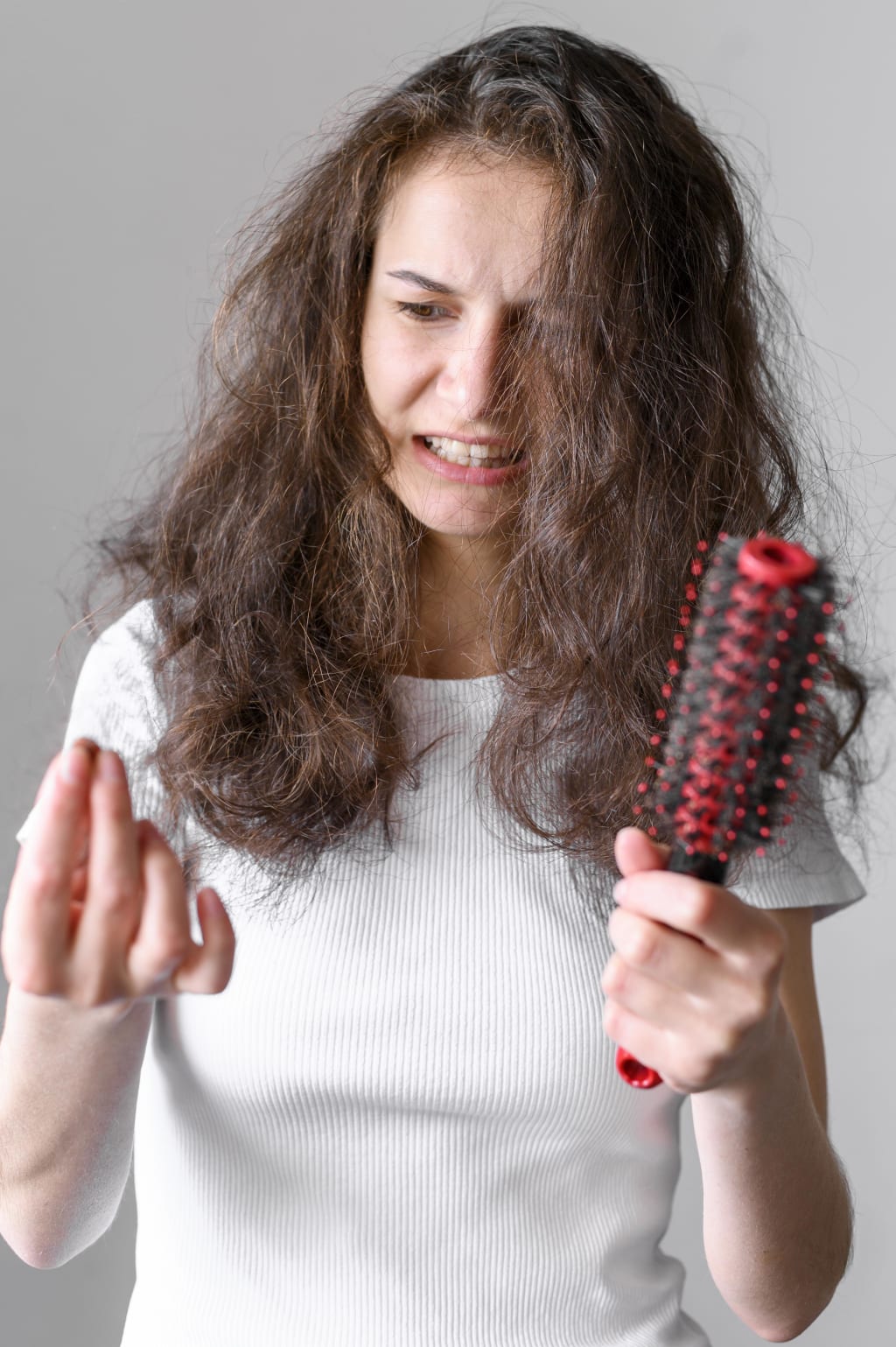
**Outline:
1. Introduction to Hair Loss
- The Prevalence of Hair Loss
- Importance of Understanding Hair Loss
2. Hair Growth Cycle
- Anagen Phase
- Catagen Phase
- Telogen Phase
3. Genetic Factors
- Hereditary Pattern Baldness
- Role of Androgens
4. Hormonal Imbalances
- Thyroid Dysfunction
- Polycystic Ovary Syndrome (PCOS)
5. Medical Conditions
- Alopecia Areata
- Scalp Infections
6. Nutritional Deficiencies
- Lack of Iron
- Insufficient Protein Intake
7. Stress and Psychological Factors
- Telogen Effluvium
- Trichotillomania
8. Medications and Treatments
- Chemotherapy
- Antidepressants
9. Environmental Factors
- Exposure to Pollutants
- UV Radiation
10. Hair Care Practices
- Overuse of Heat Styling Tools
- Harsh Chemical Treatments
11. Age-Related Hair Loss
- Senescent Alopecia
- Menopause and Andropause
12. Lifestyle Choices
- Smoking and Alcohol Consumption
- Sedentary Lifestyle
13. Diagnosing Hair Loss
- Dermatological Evaluation
- Blood Tests
14. Prevention and Treatment Options
- Topical Treatments
- Hair Transplant Surgery
15. Psychological Impact of Hair Loss
- Effects on Self-Esteem
- Coping Strategies
1. **Introduction to Hair Loss**
- **The Prevalence of Hair Loss**
Hair loss, a common affliction, affects millions globally. From mild thinning to complete baldness, it can manifest in various forms, often causing significant distress.
- **Importance of Understanding Hair Loss**
Comprehending the underlying causes of hair loss is crucial for effective management and treatment. Knowledge empowers individuals to make informed decisions regarding their hair health.
2. **Hair Growth Cycle**
- **Anagen Phase**
The anagen phase is the active growth stage of hair follicles, lasting 2-7 years. During this period, cells in the root of the hair are dividing rapidly, contributing to hair length.
- **Catagen Phase**
Following the anagen phase is the catagen phase, a transitional stage lasting about 2-3 weeks. Hair growth ceases, and the outer root sheath shrinks and attaches to the root of the hair.
- **Telogen Phase**
The telogen phase, or resting phase, lasts around 3 months. Approximately 10-15% of hair is in this phase at any given time. At the end of this phase, hair is shed, and new hair begins to grow.
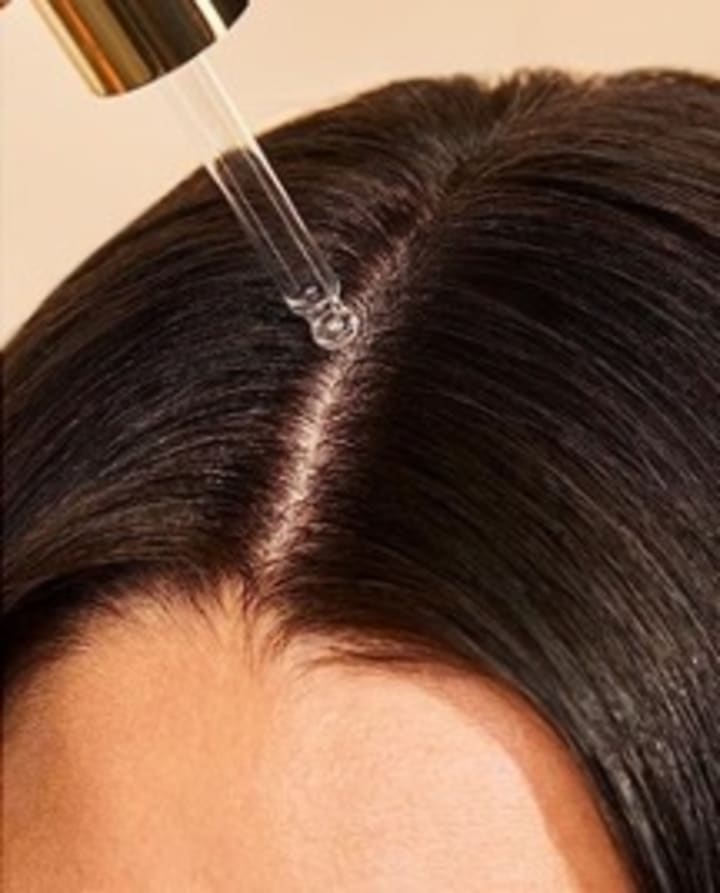
3. **Genetic Factors**
- **Hereditary Pattern Baldness**
Hereditary pattern baldness, known as androgenetic alopecia, is the most prevalent cause of hair loss. It follows a predictable pattern influenced by genetic predisposition.
- **Role of Androgens**
Androgens, particularly dihydrotestosterone (DHT), play a pivotal role in androgenetic alopecia. Elevated levels of DHT shrink hair follicles, shortening the hair growth cycle.
4. **Hormonal Imbalances**
- **Thyroid Dysfunction**
Thyroid disorders, including hyperthyroidism and hypothyroidism, can disrupt the hair growth cycle, leading to diffuse hair loss.
- **Polycystic Ovary Syndrome (PCOS)**
PCOS is characterized by hormonal imbalance, often resulting in excess androgen levels, which can contribute to hair thinning and loss in women.
5. **Medical Conditions**
- **Alopecia Areata**
Alopecia areata is an autoimmune disorder where the immune system attacks hair follicles, leading to patchy hair loss.
- **Scalp Infections**
Infections such as ringworm can invade the scalp and cause hair loss. Prompt treatment is essential to prevent permanent damage.
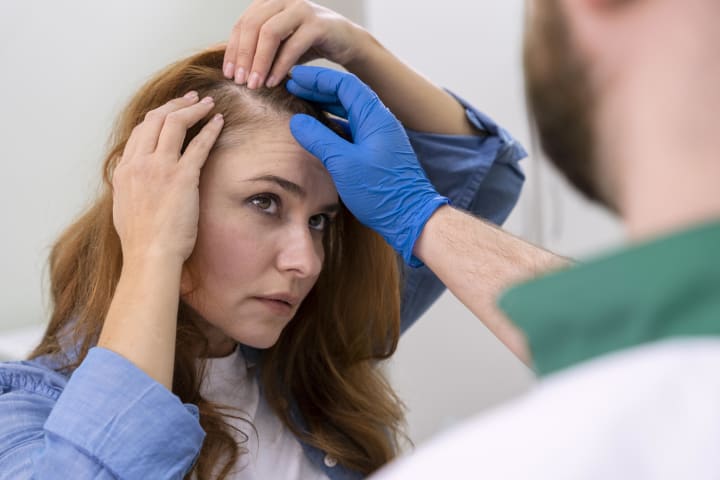
Read more for hair loss treatment
6. **Nutritional Deficiencies**
- **Lack of Iron**
Iron deficiency, often due to poor diet or absorption issues, can lead to anemia and hair loss. Iron is crucial for producing hemoglobin, which carries oxygen to hair follicles.
- **Insufficient Protein Intake**
Hair is primarily composed of protein. Insufficient protein intake can weaken hair, making it brittle and more prone to shedding.
7. **Stress and Psychological Factors**
- **Telogen Effluvium**
Telogen effluvium is a temporary form of hair loss triggered by significant stress or shock to the system, causing hair to prematurely enter the telogen phase.
- **Trichotillomania**
Trichotillomania is a psychological disorder characterized by the compulsive urge to pull out one's hair, leading to noticeable hair loss.
8. **Medications and Treatments**
- **Chemotherapy**
Chemotherapy targets rapidly dividing cells, including hair follicles, leading to widespread hair loss during treatment.
- **Antidepressants**
Certain antidepressants can have side effects that include hair loss. Understanding these side effects helps in managing and mitigating hair loss.
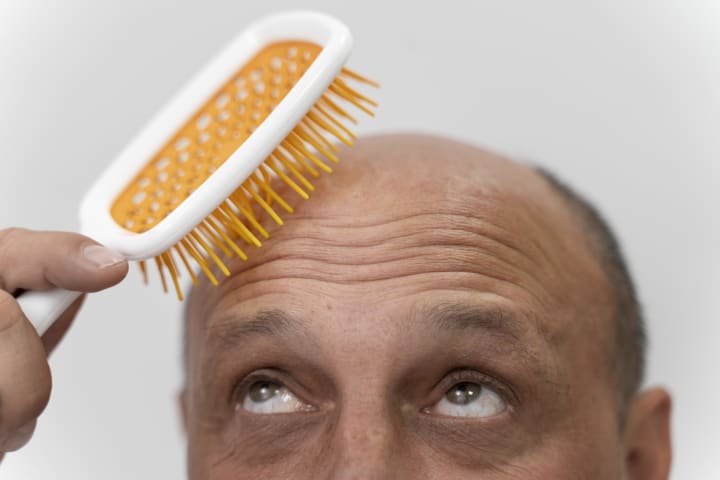
9. **Environmental Factors**
- **Exposure to Pollutants**
Pollutants and toxins in the environment can damage hair follicles, leading to hair thinning and loss.
- **UV Radiation**
Excessive exposure to UV radiation can weaken hair strands and cause hair breakage and loss over time.
10. **Hair Care Practices**
- **Overuse of Heat Styling Tools**
Frequent use of heat styling tools such as blow dryers, straighteners, and curling irons can damage hair, leading to breakage and loss.
- **Harsh Chemical Treatments**
Chemical treatments like coloring, perming, and relaxing can weaken hair structure, causing significant damage and hair loss.
Read more for hair loss treatment
11. **Age-Related Hair Loss**
- **Senescent Alopecia**
Senescent alopecia refers to age-related hair thinning and loss that occurs naturally as part of the aging process.
- **Menopause and Andropause**
Hormonal changes during menopause in women and andropause in men can lead to hair thinning and loss.
12. **Lifestyle Choices**
- **Smoking and Alcohol Consumption**
Smoking and excessive alcohol consumption can negatively impact hair health, leading to thinning and loss.
- **Sedentary Lifestyle**
A sedentary lifestyle can affect overall health, including hair health, due to poor circulation and nutrient delivery to hair follicles.
13. **Diagnosing Hair Loss**
- **Dermatological Evaluation**
A thorough dermatological evaluation is essential to diagnose the underlying cause of hair loss. This may include scalp examination and medical history review.
- **Blood Tests**
Blood tests can identify deficiencies and hormonal imbalances contributing to hair loss, aiding in targeted treatment.
14. **Prevention and Treatment Options**
- **Topical Treatments**
Topical treatments, such as minoxidil, can help stimulate hair growth and slow hair loss progression.
- **Hair Transplant Surgery**
Hair transplant surgery is a more invasive option, involving the transplantation of hair follicles from one part of the body to the thinning or bald areas.

15. **Psychological Impact of Hair Loss**
- **Effects on Self-Esteem**
Hair loss can significantly impact self-esteem and self-image, leading to emotional distress and social withdrawal.
- **Coping Strategies**
Effective coping strategies, including support groups and counseling, can help individuals manage the psychological impact of hair loss.
Understanding the multifaceted causes of hair loss is essential for developing effective prevention and treatment strategies. Through a comprehensive approach, individuals can better manage their hair health and mitigate the impact of hair loss on their lives.
**Disclaimer**
This article is for informational purposes only and is not a substitute for professional medical advice, diagnosis, or treatment. Always seek the advice of your physician or other qualified health provider with any questions you may have regarding a medical condition.
About the Creator
Enjoyed the story? Support the Creator.
Subscribe for free to receive all their stories in your feed. You could also pledge your support or give them a one-off tip, letting them know you appreciate their work.




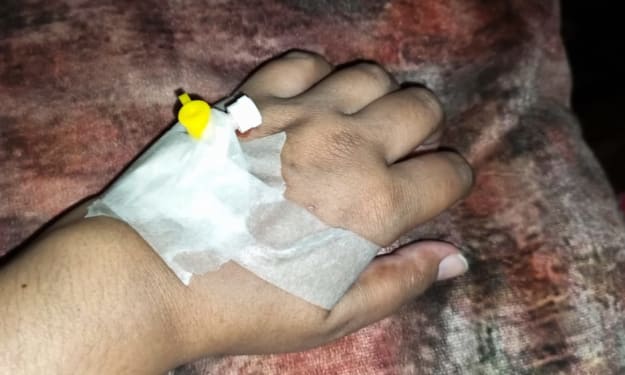
Comments
There are no comments for this story
Be the first to respond and start the conversation.